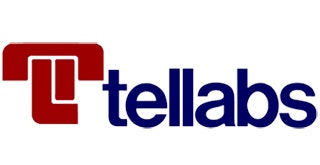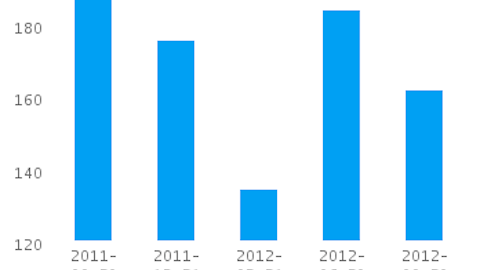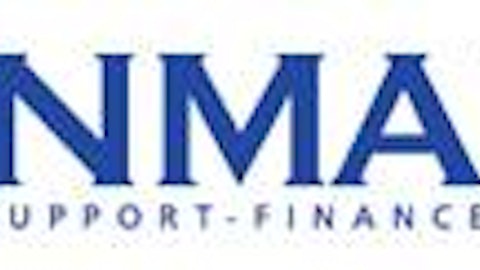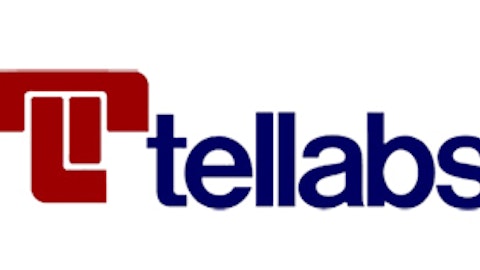Recently, I stumbled across three notable earnings misses – Tellabs, Inc. (NASDAQ:TLAB), Zoltek Companies, Inc. (NASDAQ:ZOLT) and Black Hills Corp (NYSE:BKH). I would not have noticed these companies because had they not been on my radar. All three are relatively smaller companies, market caps between $280 million and $1.78 billion, and belong to different industries. However, the earnings misses were not as much of a surprise as the performance of these three stocks.
Tellabs is a communications equipment company that also provides services to its customers. Its product portfolio includes products that enable delivery of wire-line and wireless voice, data, and video services and operates under three segments – Broadband, Transport and Services.

Revenue during the quarter was also 24% less than the same quarter prior year. Revenue for the full year ended December 2012 was 20% lower than prior year. Although the company reported a significant reduction in cost of revenue and operating expenses, there has been an alarming increase in net losses, which is up from $4.9 million to $23.30 million.
The results were declared after hours. There hasn’t been any upward movement in the stock price in the run up to the earnings date. In fact, the stock closed just $0.01 up from what it was at the start of the month, when it had lost the gains made on declaration of special dividends in November 2012.
The stock gained 2.7% on January 31, 2013, the day the results were to be declared, but was being quoted at 5.70% less in afterhours. What is significant is that the analysts had forecast a negative EPS for the quarter.
Things That the Market Ignored
Regardless of inferences one can make from the results, the market has not cared to respond to positives relating to TLAB.
1). Announcement of share buyback program for repurchase of 22.5% of outstanding shares.
2). Aside from regular quarterly dividends, the company paid two special cash dividends of $1 each in December 2012, amounting to more than 50% of market price prevailing at that time.
3). The fact that the book value is $3 per share and the stock is trading at P/B ratio of 0.74.
4). The stock is undervalued at this price.
Black Hills Corp (NYSE:BKH) is a diversified energy company that operates with two major segments – Utilities and Non-regulated Energy. Earlier known as Black Hills Power and Light Company, it was incorporated in 1941 as an electric utility service. From 1956 the company started producing and selling various forms of energy through its non-regulated energy segment.
In its quarterly earnings report, the company reported an EPS of $0.68 beating analyst forecasts of $0.62. Adjusted income from continuing operations was $30.0 million, up from $19.7 million in the same quarter prior year. The company also announced a dividend payout of $0.38, which is an increase of $0.01 from the previous quarter.
In this case too, company missed revenue forecast by $46 million but the performance of its stock has been different from that of TLAB. In the run up to the earnings date, the stock gained 11.03% in January 2013. On the day the results were declared, it lost about half percent.
What the Market Took into Account
Black Hills has attracted the attention of investors after the recent sale of its oil properties and the forward guidance issued by the company. The regulated utilities segment is expected to account for 77% of earnings in 2013. However, it is the Oil and Gas division under the non-regulated segment that is primarily responsible for the recent investor interest.
 This division of the company acquires, explores, develops and produces gas and crude oil for sale in the commodities market. In August, the company sold its interest in shale oil assets in the Williston basin, which accounts for only 15% of its total oil and gas reserves. The $243 million that it got from this sale is to be used for reducing the interest burden paying off debt that is due in 2013. The interest saving amounts to $0.09 per share, which is likely to result in better future earnings and also help in avoiding the need to raise fresh equity capital for funding the planned $1.2 billion capital expenditure till 2016.
This division of the company acquires, explores, develops and produces gas and crude oil for sale in the commodities market. In August, the company sold its interest in shale oil assets in the Williston basin, which accounts for only 15% of its total oil and gas reserves. The $243 million that it got from this sale is to be used for reducing the interest burden paying off debt that is due in 2013. The interest saving amounts to $0.09 per share, which is likely to result in better future earnings and also help in avoiding the need to raise fresh equity capital for funding the planned $1.2 billion capital expenditure till 2016.
Apparently, the market ignored the fact of decline in production in 2013, which is estimated at 6%.
At $40.89, the stock is trading at 1.49 times book value. Considering the potential for profit and reserves of scarce natural resources, the BKH appears to be undervalued.
Zoltek Companies (NASDAQ:ZOLT) is an applied technology and materials company. It operates through wholly owned subsidiaries and is engaged in development, manufacturing and marketing of carbon and technical fibers and in manufacturing of filament winding and pultrusion equipment used in the production composite parts. ZOLT has manufacturing units in Hungary and Mexico and in Abilene (Texas) and St. Charles (Missouri).
The company reported revenue of $35.9 million and EPS of $0.09 for the quarter ended December 2012. On both counts, it missed analyst forecasts – revenue by $6.1 million and EPS by $0.04.
In this case, ZOLT stock price gained 5.16% in January and settled at $8.15 per share after having touched $8.51 on January 11. On the day quarterly results were to be released, the stock reacted and gained 4.62% in one day.
Pluses for ZOLT
1). ZOLT is expected to grow at an annual average rate of 15% in the long term. However, analyst forecast for the remaining three quarters of the fiscal year 2013 is for a negative growth of 26.77%.
2). The company stands to benefit from the extension of wind Production Tax Credit, which was part of the fiscal cliff package.
3). The stock is trading at a discount to its book value of $8.89 per share. Any dip in share price is a buy signal for holding the stock for long term gain.
Forecasts are supposed to be based on solid facts and figures researched and studied by analysts before making them. Should you invest or trade believing them? Read on.
In an article published in the Wall Street Journal, the writer says, “What goes unsaid, however, is that these positive surprises are becoming so common they are nearly universal. They are predetermined in a cynical tango-clinch between companies and the analysts who cover them. And there is no reliable evidence that the stock market as a whole will earn higher returns after periods with more positive surprises.”
Surprises or missing forecasts are nothing to get excited about. They will keep coming at you every earnings season. The same article goes on to say, “Even in the depths of the financial crisis, from the third quarter of 2008 through the first quarter of 2009, between 59% and 66% of companies beat expectations”.
My humble suggestion to readers, go back to fundamentals. Even more importantly, understand a company, understand its products, its markets, and its management, before buying into it.
The article Notable Earnings Misses and Their Relevance originally appeared on Fool.com and is written by Sujata Dutta.
Copyright © 1995 – 2013 The Motley Fool, LLC. All rights reserved. The Motley Fool has a disclosure policy.





